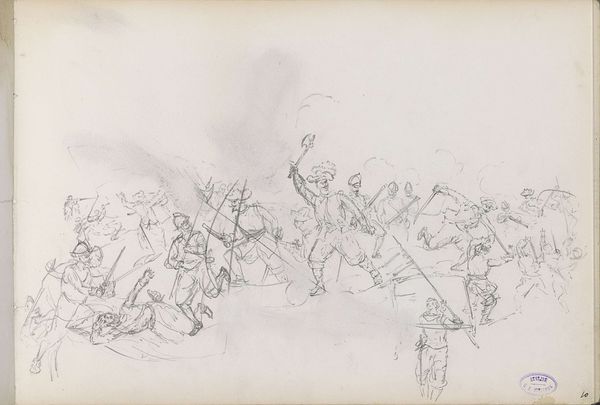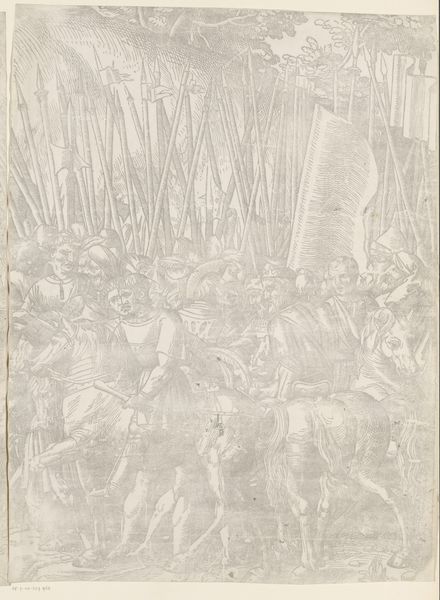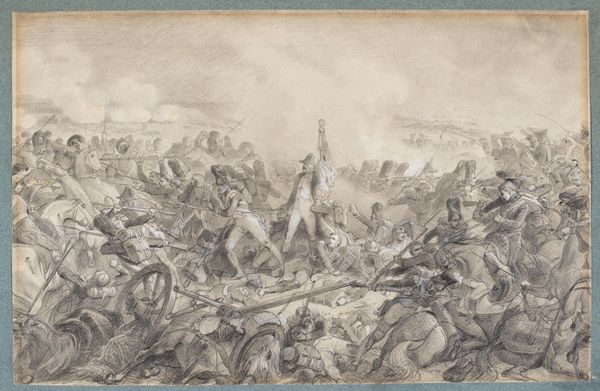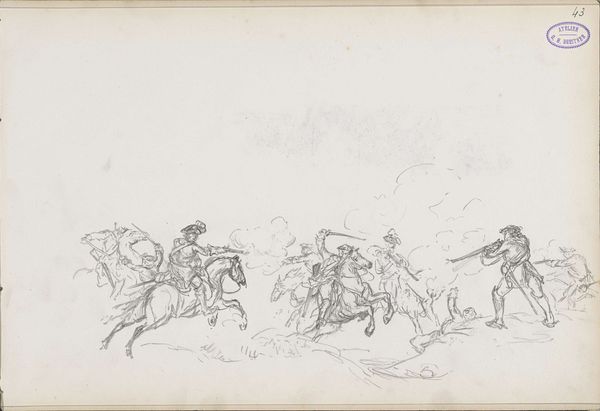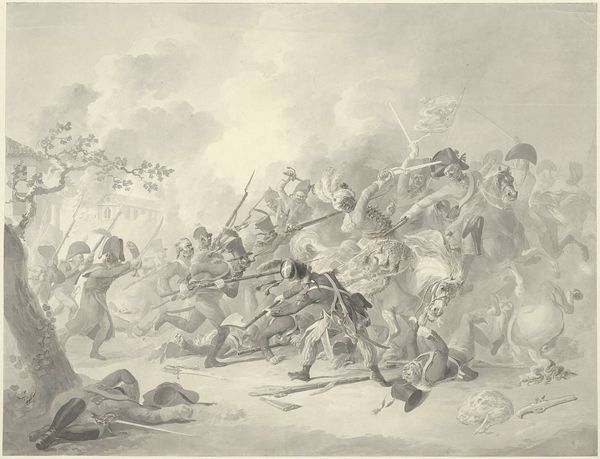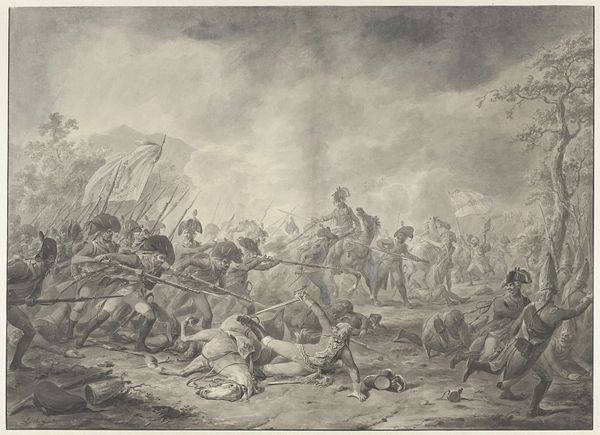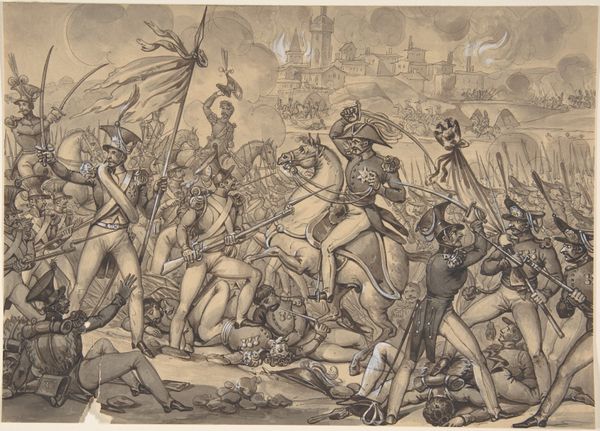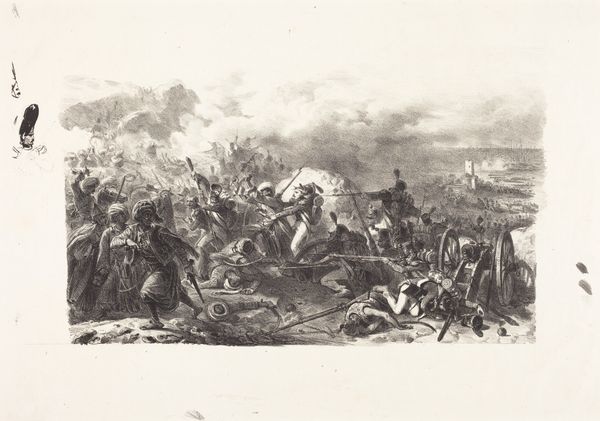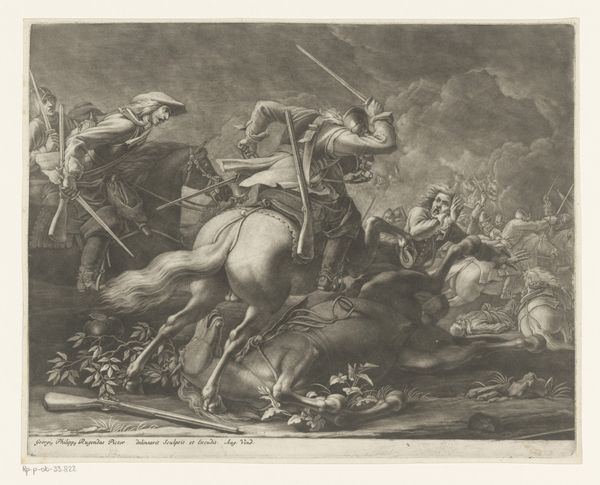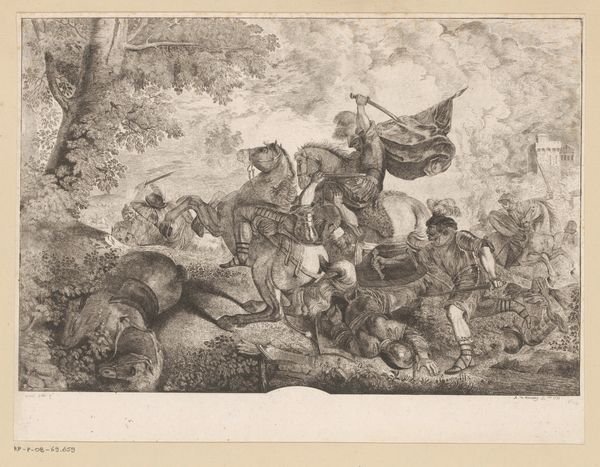
drawing, gouache, paper, ink, pencil
#
drawing
#
gouache
#
landscape
#
figuration
#
paper
#
ink
#
romanticism
#
pencil
#
history-painting
Copyright: Public Domain
Editor: Victor Müller's "Knight Battle," created in 1845, renders an active battle scene with ink, gouache, pencil, and paper. It feels almost dreamlike with the hazy atmosphere and monochromatic palette, creating distance from the depicted historical event. What can you tell me about how historical memory operates within it? Curator: Notice the repeated motifs: the raised lances, the figures in armor, and the charging horses. These aren’t just elements of a battle; they're visual echoes. Armor itself carries centuries of associations – protection, chivalry, power. The flags act similarly. What symbols do you think the artist invokes here and to what end? Editor: They evoke ideas of nobility, duty, maybe even sacrifice… like romanticized versions of war, disconnected from the gritty reality. Curator: Exactly! The repetition is important. By presenting these familiar symbols, Müller isn’t just showing us a battle; he's activating our collective understanding of battles. He builds upon historical imagery and cultural memories. Consider how artists return to historical and mythological battles repeatedly. It’s as if the memory of conflict takes on a life of its own through visual reiteration, transforming our understanding of warfare in the process. It prompts us to recall similar conflicts depicted throughout art history. What continuities might the viewer draw upon in seeing these familiar forms in the knight's armour and horses and flags? Editor: It's fascinating how the romantic style almost softens the violence. The past really can feel less brutal when it’s filtered through art. Curator: And the filtering itself is key. This piece makes me think about how representations of the past, particularly of conflict, help us both remember and perhaps misremember events across time. The cultural memory is actively being shaped here. Editor: That’s really interesting! It highlights how history paintings shape perceptions and influence cultural memory far beyond simply illustrating a moment in time.
Comments
No comments
Be the first to comment and join the conversation on the ultimate creative platform.
